Winter's end on the urban river

We took los primos out on the urban river this week. Me and my brother-in-law, with our wives’ two visiting cousins from Argentina, college boys studying English over their South American summer break. And with our seven-year-old nephew, who came along somewhat reluctantly at first, but not for long. It’s hard not to be happy on the river, once you’re actually out there, no matter how young or old you are. Even when the river is ten minutes from downtown, and the destination of your trip is a wall of concrete designed to protect the city from wildness.

The cousins live on a different urban river, a wilder and more powerful one. The Rio Mendoza comes down out of Andes below Aconcagua in a wide channel that flows fast. On warm days the locals gather beside it at the edge of town and park and party. Upriver from town, where the mountains finally turn into hills, the river rages in early summer, an epic whitewater colorado. And the lands around it are free and open, beneath mountainscapes painted in colors you will never see anywhere else.

Our river is not as epic. It runs in the shadows of 21st century high-rises designed by spreadsheets, bringing water that comes from the springs and valleys of the Texas Hill Country. But when you’re out there on it, you wouldn’t know you were in the heart of an American city, but for the sounds of cars and jets in the background. For long stretches all you can see are tall trees on either side, and the wild birds that make free-flowing freshwater shallows like this their habitat. Below the municipal dam, the river has been preserved, by a mix of happy accident and earnest intention, in what feels like its natural condition. For now.
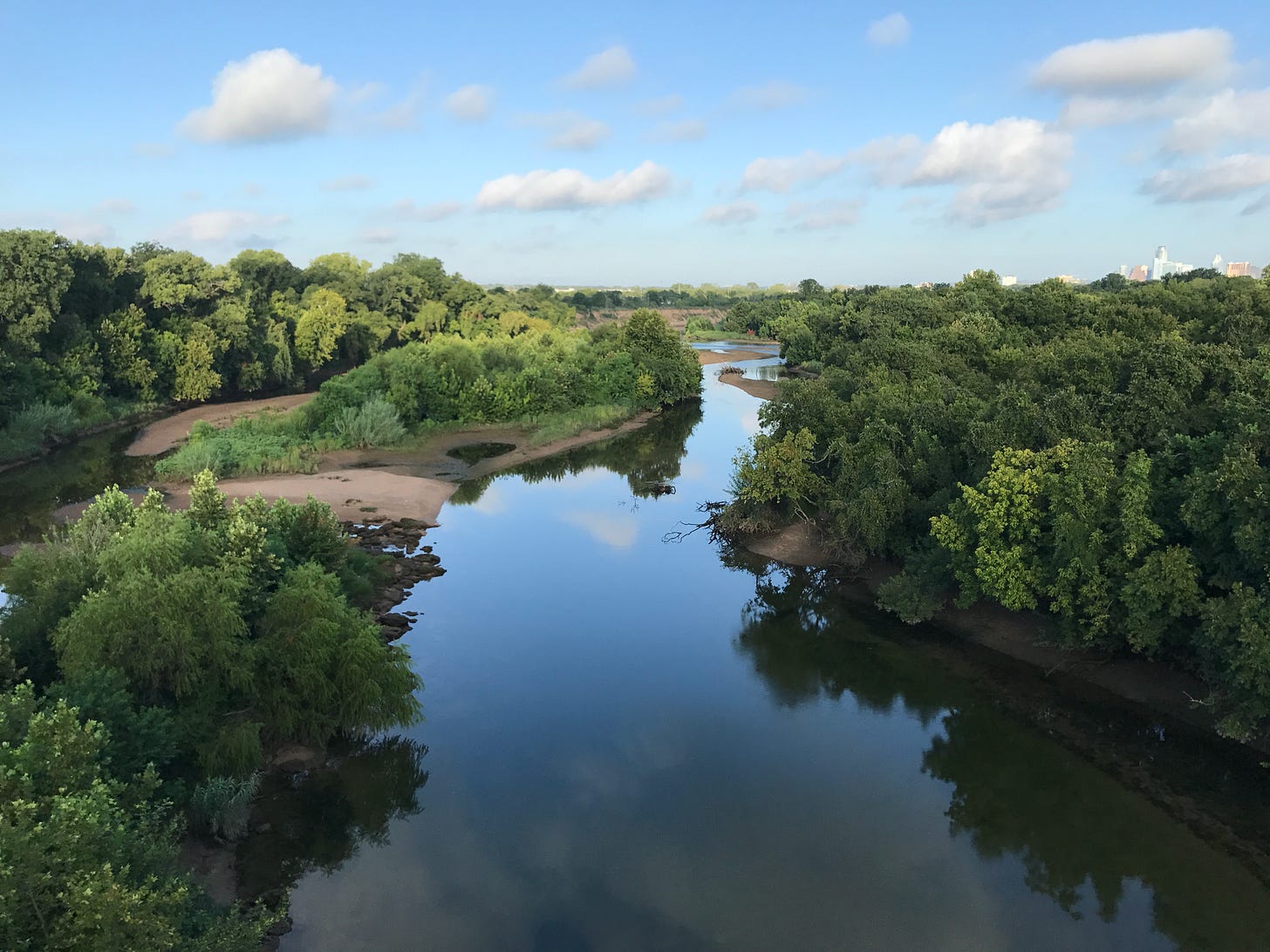
I first discovered this stretch of river not long after I moved here in the 90s, headed to the new airport they built from a decommissioned Air Force base, where they used to fly B-52s over our southern neighbors. When you drove over the old bridge, you could see it down there, a stretch of what looked like essentially wild river, with lush green woodlands on either side, nestled in the eastern edge of the city. I took my then-Cub Scout with me—he was the same age our nephew is now. We drove around cloverleaf frontage roads behind the industrial park until we found the rugged landing underneath the bridge, and paddled it one Saturday morning in the innocent days before 9/11, when this town was infused with the mania of the Long Boom.

I’ll never forget that first time we put in, not even five minutes upriver from the car, and saw a hawk strike a duck in midair as we paddled, twenty feet away. The duck somehow survived, even as its feathers fluttered down to the water. The difference from the other stretches of urban river around here—man-made lakes designed to control the floods, generate power, and make deep calm channels suitable for motorboats—was astonishing. A much greater diversity of birds and trees, fish swimming and jumping in crazy clear water, and an authentic natural tranquility. A sliver of the Arcadian state, preserved as an inadvertent byproduct of industrial downzoning that mostly kept the people away. Years later, engaged with my neighbors in a fight to protect it from developers and the municipal officeholders who serve them, I found a description of this stretch of river prepared by a team of planners assessing its condition in 1984:
The Colorado River and its environs…are very different in character from the upstream dammed segment and its highly urbanized environment. The aesthetic quality of the river corridor is best described as pastoral, tranquil. The scene is that of the Colorado River in early days: gravel and sand bars, shallower waters easily fished by many species of water fowl and other birds, e.g., osprey, bald eagles and peregrine falcons and beds of submerged aquatic plants, and ashes, willows and anacuas. Although Highway 183 noises dominate the soundscape of the far eastern boundary, even there the river is quite lovely and peaceful.

The river flows through what used to be the edge of town, where the city planners zoned the heaviest industrial uses on the other side of the lines Jim Crow drew, and people dumped trash over the course of a century. Brave activists who grew up in this neighborhood managed to shut down the worst of those industrial uses, but many are still in operation—the dairy plant, the cement plants, the door factory, the auto salvage yards, big truck depots, distribution points for the movement of machine lubricants.

They can’t dredge gravel straight from the river anymore, but they still quarry the older deposits on both sides. Every morning, the big trucks loaded with aggregate line up in long queues across the river, to carry the remains of whatever was left here by the movement of water millions of years ago, and use it to build the foundations of the new monuments to techno-capitalism downtown. But out on the water, especially in the early morning, you wouldn’t know. But for the trash the river sometimes leaves behind, and the 737s that share the flightpath with the migratory birds, you could be a thousand miles from any road.

The effect a place like this has on people is evident in the frequency with which it induces them to strip off their clothes. When we up ended making our home here in an industrial lot we rehabilitated, and I started walking along the river every day, I often encountered nude photo shoots underway in the sylvan shallows, one time with a film crew acting out a chainmail aquafest that looked like some Frank Frazetta fever dream. Partly that’s an Austin thing, in this town where the spirit of 1973 lingers strong, but the river brings it out. Everyone who discovers it thinks they have found a secret. And in a way, they have.
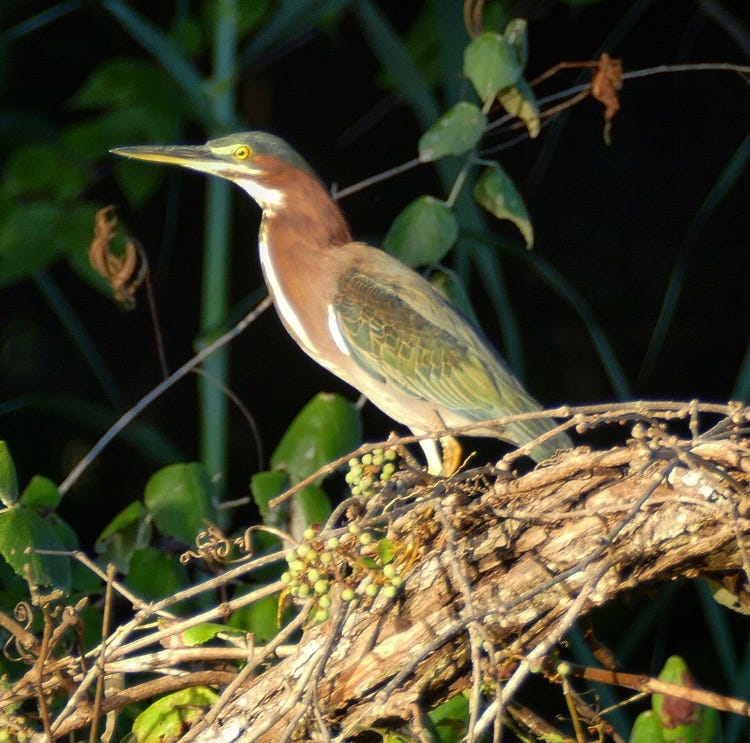
The spot where the dam holds in what they used to call “Town Lake” is a natural low water crossing, where the channel is wide and shallow. You can still see the ruts of wagon wheels in the rocky bed where people living outside have built shelters from river flotsam in the shadows of the skyscrapers, right behind the bank where they hoard the money and mortgage the real homes. This was the main river crossing of the Chisholm Trail, where enterprising cowboys would take the herds of free-ranging cattle they found roaming the ungoverned lands of South Texas in the years after the Civil War, and drive them up here and on to Fort Worth, the Indian Territory that became Oklahoma, and finally the railhead in Kansas where they would be taken to market to feed the cities of the East.
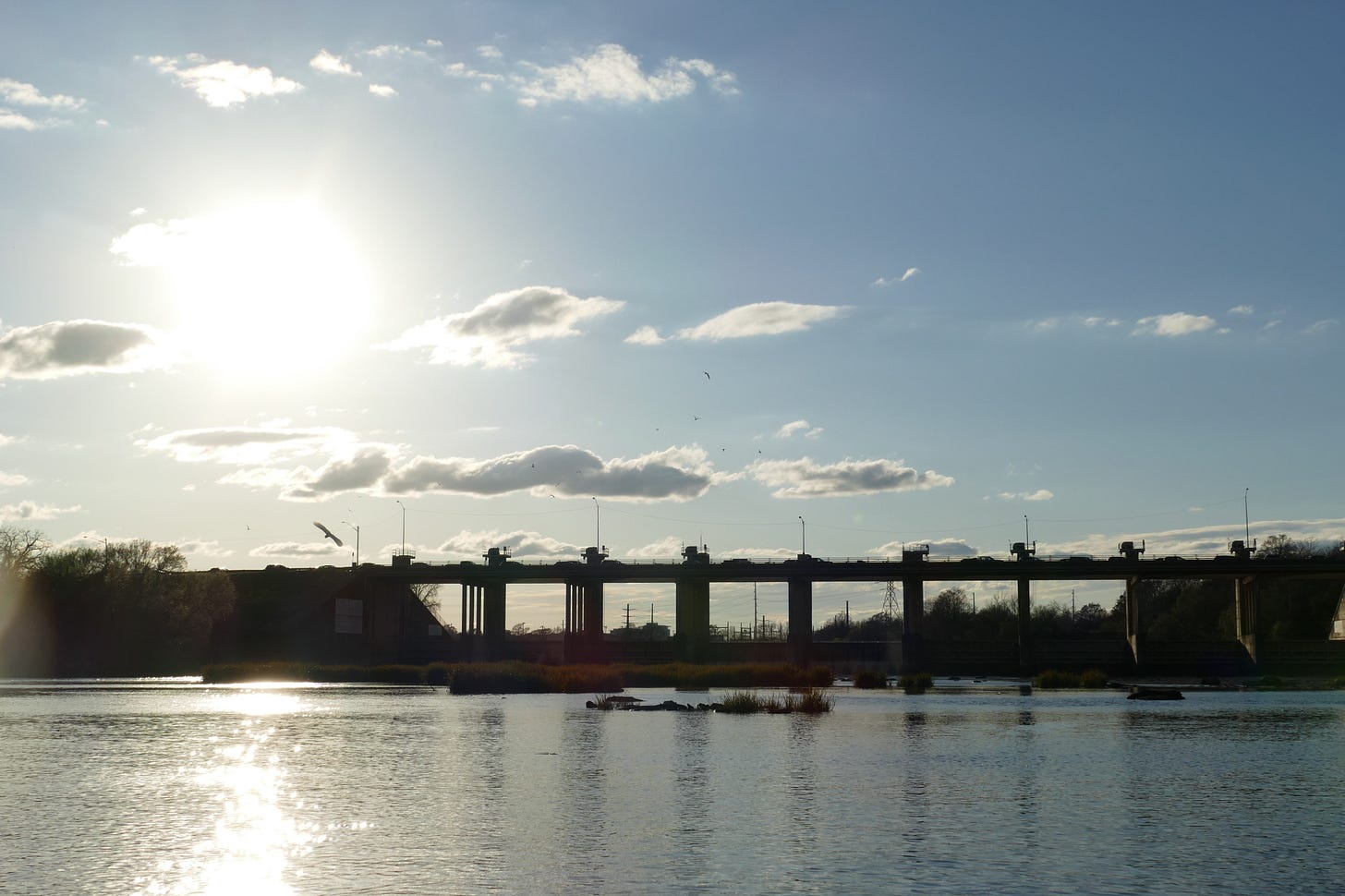
“Deer trail becomes Indian trail becomes country road,” as the man says in General Orders No. 9. Those pathways record much deeper history than what’s been recorded since we got here, and when you walk the river after a good rain, you find relics of stories no one wrote down—shards of 19th century plates and cups, cables from old ferries, stone age hand tools, the blue glass of old transformers and pharmaceuticals, the fossils of Cretaceous bivalves. Where the mudlarkers of the Thames learn how long their city has been there, when you comb these banks you realize how short a time it has been that Europeans have occupied this land. And when the Friday morning birdsong is interrupted by the alien roar of a pair of low-flying fighter jets, you are reminded that this is colonized space.
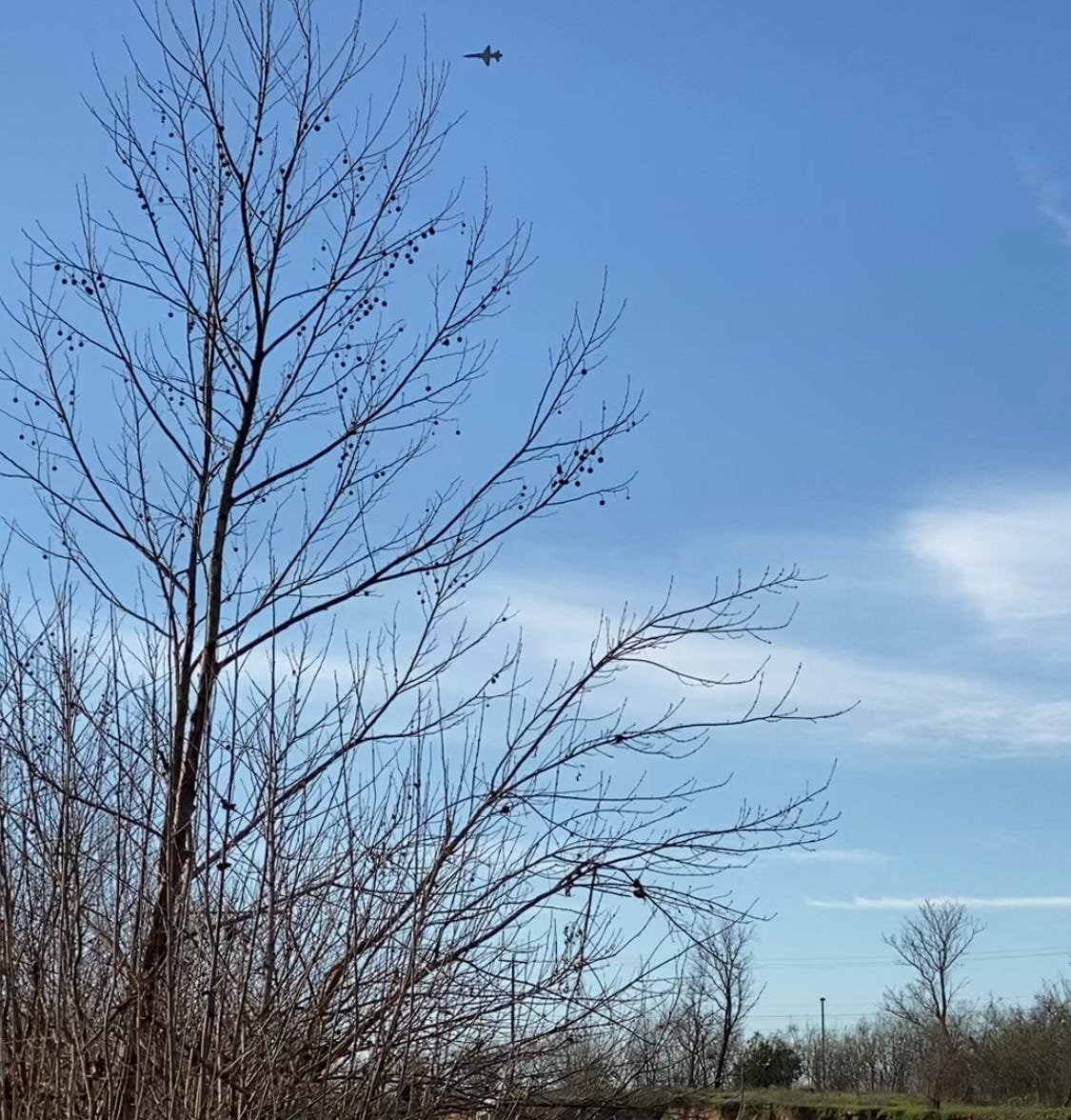
The old ranch on the south side of the river is a city park now, the river a popular place for hipsters to take their dogs. And in the background you can see the cranes that usually follow the hipsters, advance scouts of the real estate speculators who have done such a good job of domesticating the American wilderness. The developers are the real descendants of this town’s namesake, whose environmental ethos T.R. Fehrenbach captures in his history of the state:
“Austin had no notion — not for many years — of taking the land away from Mexico. Somewhere along the line, Austin lost interest in his personal fortune and developed an obsession to ‘redeem Texas from its wilderness state by means of the plow alone, in spreading over it North American population, enterprise, and intelligence.’ What his Mexican colleagues, totally lacking in such instincts, could never comprehend was his sincere and boundless joy at the destruction of the wilderness. Each crashing tree along the Brazos gave Austin pleasure; each mud-paved town hammered together in the middle of nowhere instilled in him a sense of destiny fulfilled.”

As the industry moves on, people move in, just like we did. The old Quonset huts are microbreweries now, the salvage yards and light factories are offices, midrise apartment buildings are replacing trailer parks and cross-border bus depots, and looming over the dam is the Orwellian red logo of Mr. Ellison’s cloud factory. And yet, even as the energetic new metropolis moves in around it, the wildlife persists, and the tranquility of this little stretch of the river continues, making you wonder if maybe there’s a way to grow a city without displacing the wild.

The birds don’t seem to mind, so far, from what we saw on our paddle this week. In the tall bare cottonwood that grows out of the island of trash below the head shop, the blue crankys have taken over and turned it into their own multifamily development, four birds warming their huge nests on a cool and windy afternoon in February.

The osprey that used to always hang out in that tree was not far away, grooming after what must have been a productive day working those gusts. The visiting ducks worked their way up and down the water, and the big flocks of egrets loitered in the edges of the spillway, where the first turtles of spring were sunning themselves on rock. The turtles don’t mind that the rocks are actually chunks of concrete left behind when the dam was built in 1960, nor do the water grasses that grow up between them.
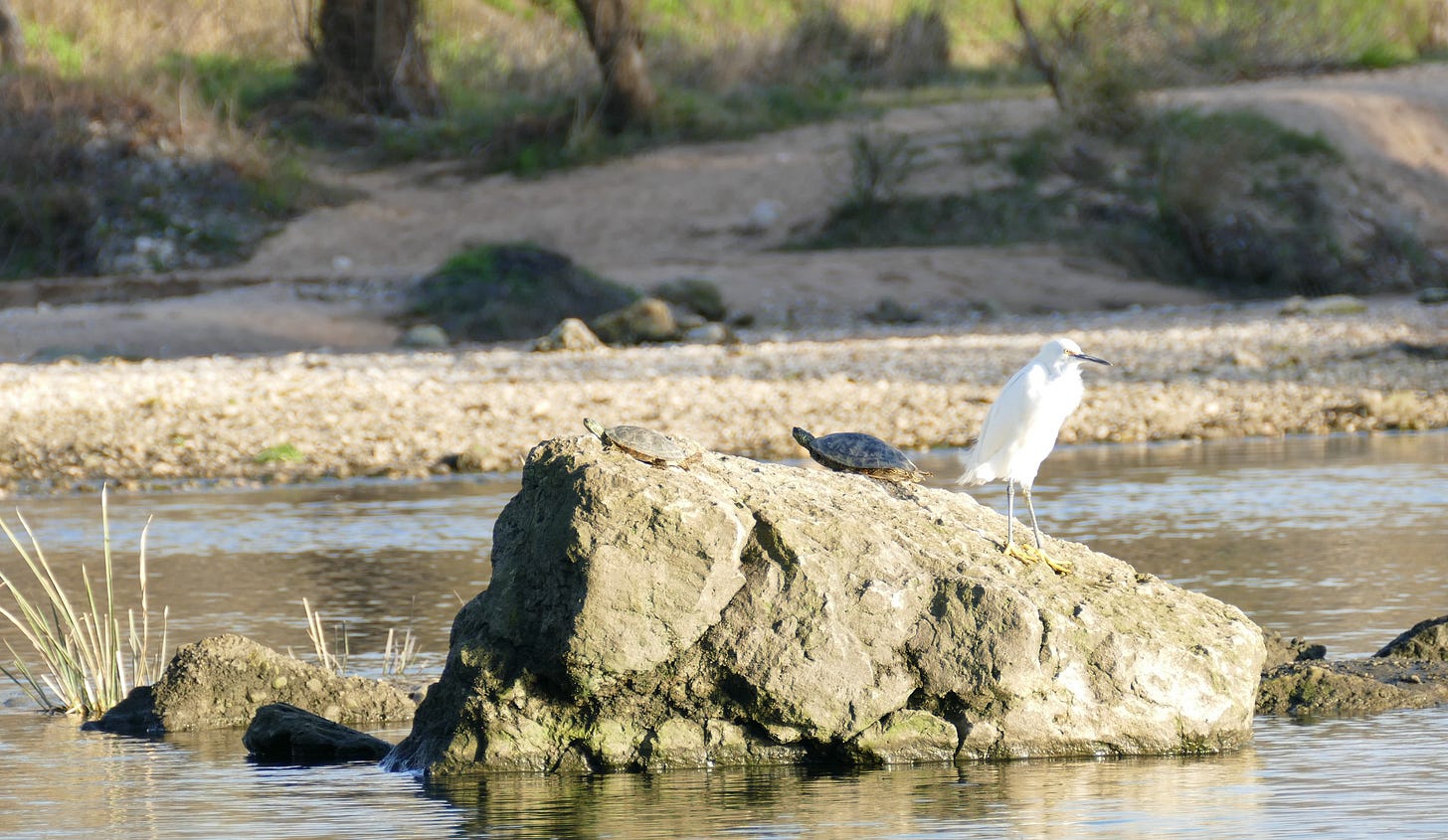
What I’ve slowly learned in the twenty years I have been able to enjoy this stretch of urban wild is that it’s not an Arcadia. It’s a place that in my lifetime was an industrial site. The wetland that looks like its been there since the beginning of time, even with the old Impala slowly sinking into the muck like Ozymandias’s low-rider, is what used to be a roadbed before World War Two, and a place where the trucks would would dredge gravel when I was a kid. You can see it there on the old topos, and right there in the land, if you learn where to look. As soon as we give it some room, nature moves back in. Even in the heart of the fastest growing city in America, in the shadows of the congested highway, behind the factories still humming.

About halfway through our little trip the first grader voted to stop and look for fossils on one of the rocky shoals. No ammonites that day, but we did find a baby bass beached in a shallow puddle, too young to have learned how to adapt to the daily schedule of releases from the dam. He helped the young fish get back into the river and swim off. I remembered another grounded fish I had similarly rescued almost fifteen years ago, after a flood in the spot people later named “Secret Beach,” on a day when I was feeling pretty emotionally beached myself. Nature doesn’t really need our active help, but it doesn’t hurt to try to give back some of the life you get.

*This week’s bonus video is a long smartphone shot I managed to capture on this stretch of river a few years ago, of an osprey diving to grab a fish from the deep channel, as a jet passes over.

